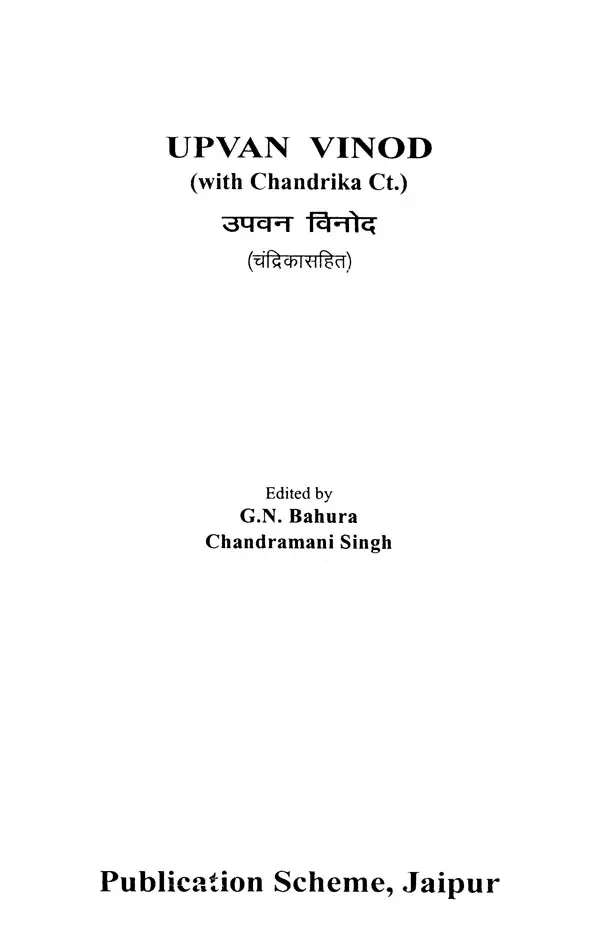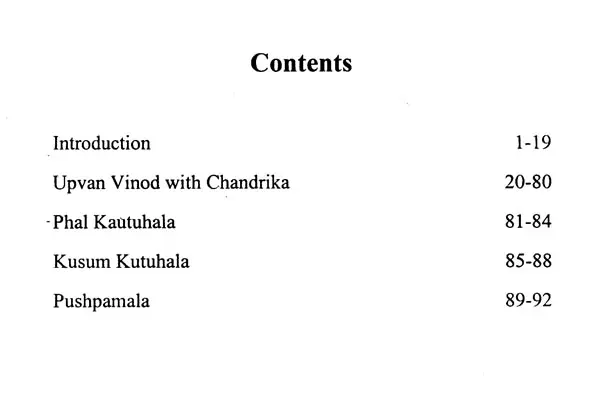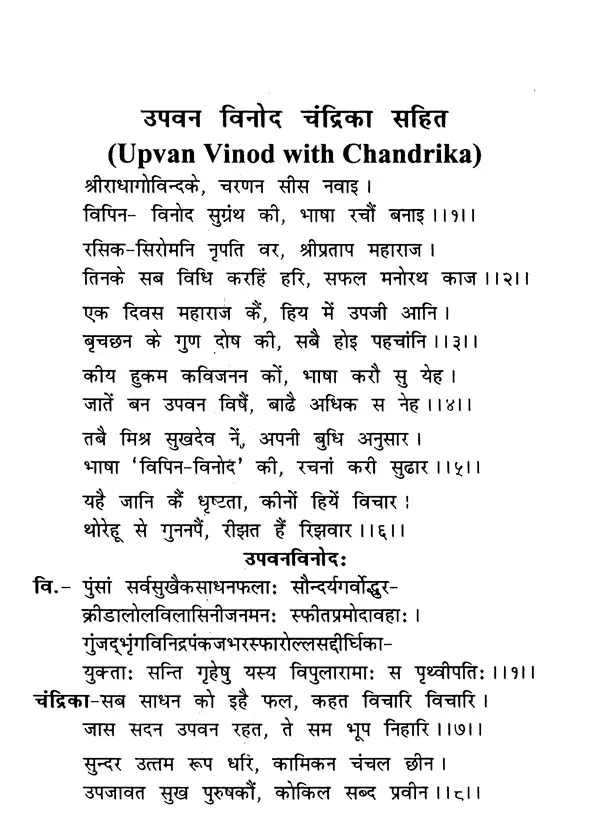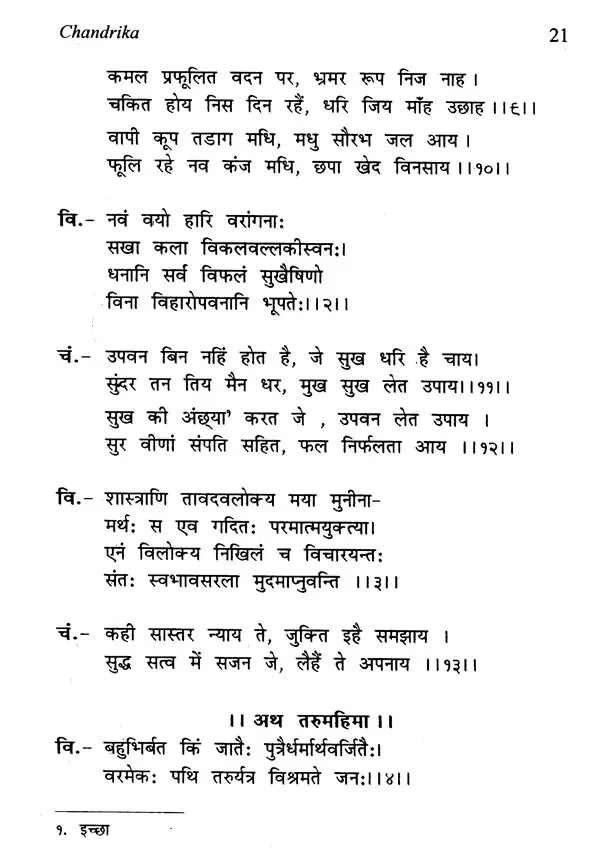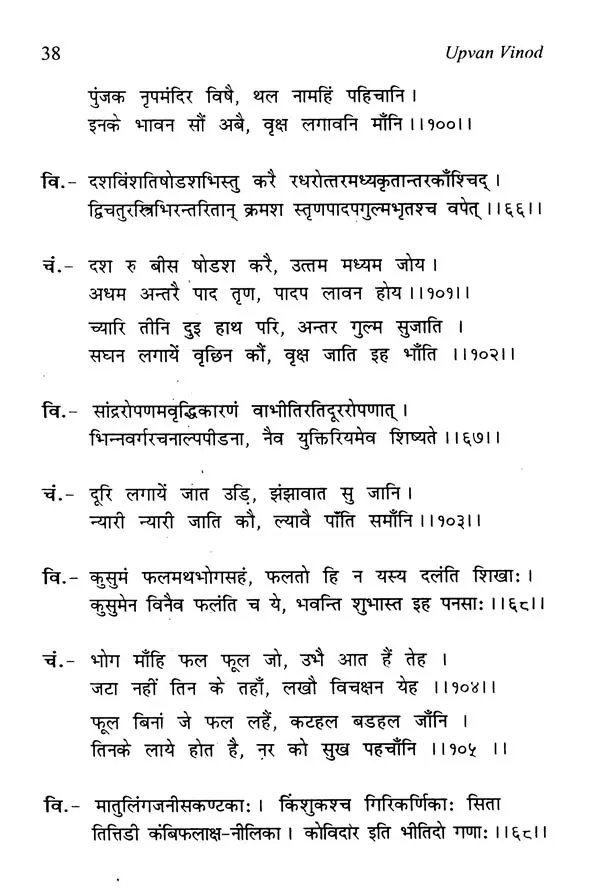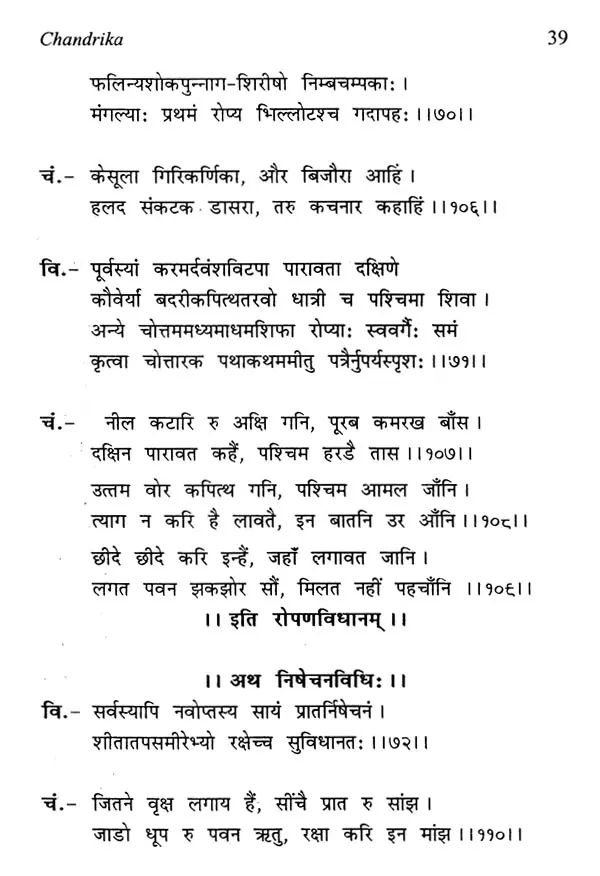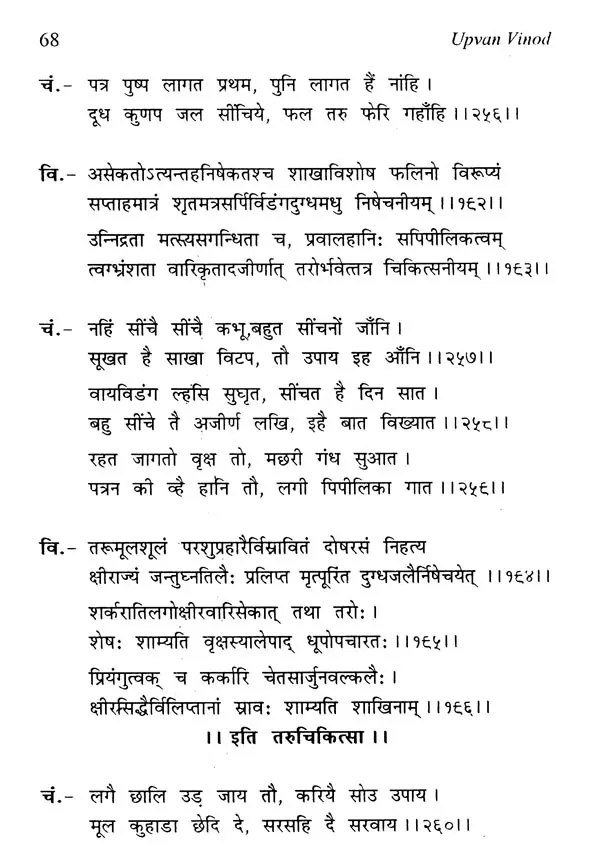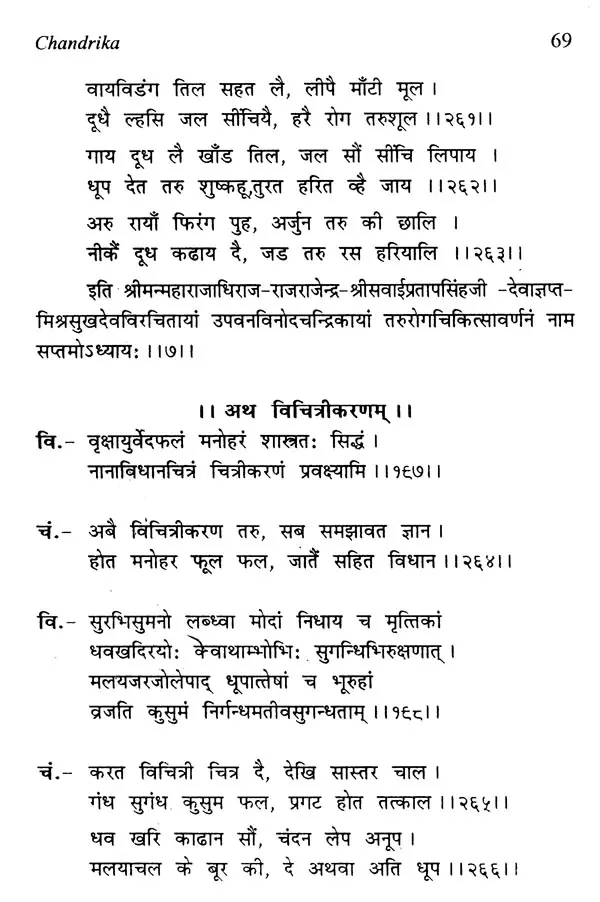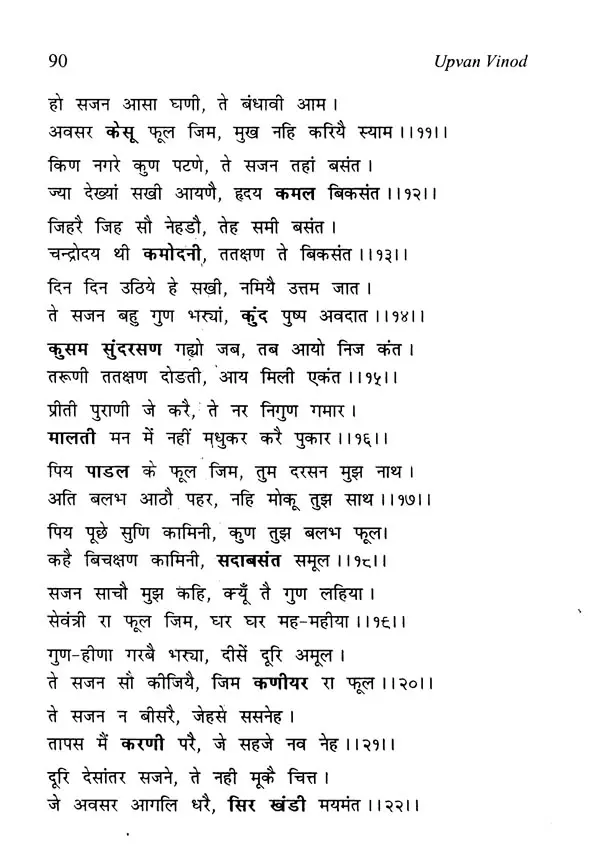
उपवन विनोद (चंद्रिकासहित)- Upvan Vinod (With Chandrika Ct.)
Book Specification
| Item Code: | UAH290 |
| Author: | G.N. Bahura and Chandramani Singh |
| Publisher: | Publication Scheme, Jaipur |
| Language: | Sanskrit and Hindi |
| Edition: | 2002 |
| ISBN: | 818678280X |
| Pages: | 94 |
| Cover: | HARDCOVER |
| Other Details | 9.00 X 6.00 inch |
| Weight | 220 gm |
Book Description
Two texts included in this context from Khas-mohartpersoual) collection of the Jaipur Royal family. are Upavan Vinod in Sanskrit and its Hindi version Upavana Chandrika .Though tile Sanskrit text is an ancient work, its Hindi translation 'vas prepared under orders of Maharaja Sawai Pratap Singh ( I 778-1803) by one Sukhdeo Mishra Kai. The text starts with importance of a garden and deals with its different aspects plants, manure and watering systems.
He has authored and edited several works, an octogenarian, Sri Bahura is still active and busy with a commentary on Shataputh a Brahman.
Chandramani Singh. an art historian of repute, Dr.(Smt.)) Singh is at Jawahar Kala Kendra, Jaipur, where she looks after the Documentation Division. She has specialized in medieval India and has authored six works on textile, Music and paintings.
Texts dealing with importance of a garden and how to plant trees have been written from ancient times, the earliest being Agni Purana (c.750).
The khas-mohar (personal) collection of the Jaipur royal family has two such works- Upavana Vinod in Sanskrit and its Hindi rendering Upavana Chandrika. This work includes both these texts and three manuscripts on names officiate and flowers composed in couplets, along with a short note on gardens at Amber and Jaipur, which forms the introduction. The date and authorship of the Sanskrit text is not known though it was included in Sarangdhar Paddhati compiled by Dr. Peter Peterson. I Its Hindi translation was prepared under the orders of Maharaja Sawai Pratap Singh by Sukhdev Mishra. The text starts with importance of a garden and deals with various kinds of plants, manure and watering system. It seems that in the 18- 19th centuries with growing popularity of bhasha (Hindi), there was a demand of Hindi rendering of old Sanskrit texts. A similar work from Udaipur may be cited here, introducing this text BM Javalia writes me , "The manuscript was copied by Koteshwar, a copyist with Maharana Sajjan Singh of the Mewar State, a princely state during the British rule of India which is now a part of the state of Rajasthan in India. It was copied from the earlier manuscript written by Vadanmal Mehta in early 1800 Koteshwar was permitted to copy by Sanwaldas (a charan poet) by the order of Maharana Sajjan Singh. This manuscript was then formally presented to Maharana Sajjan Singh in 1877 A.D."
GARDENS IN ANCIENT INDIA
Garden has always been an integral part of the Indian architecture-both residential as well religious. In ancient times, palaces and mansions had large gardens with dirghika (water channel ), grove and lotus pond. Cities and towns had public gardens where elite could go to spend pleasure time and enjoy the scenic greenery ofthe place which was popularly known as udyan-yatra i.e, visit to the garden.' It was a feature of the ancient Indian way of ‘life. A temple had usually a flower garden attached to it which provided flowers for the offering to the deity.
References to those gardens appear often in the ancient literary works and inscribed stones of the temples.
Book's Contents and Sample Pages
